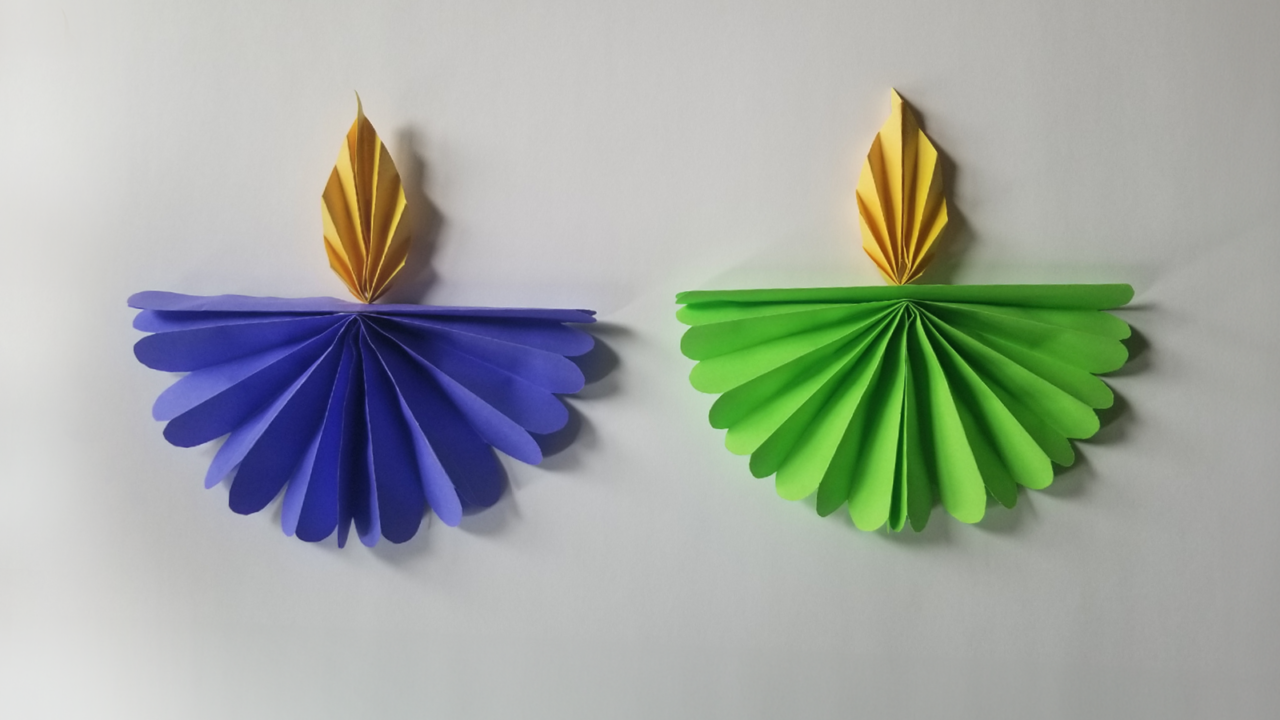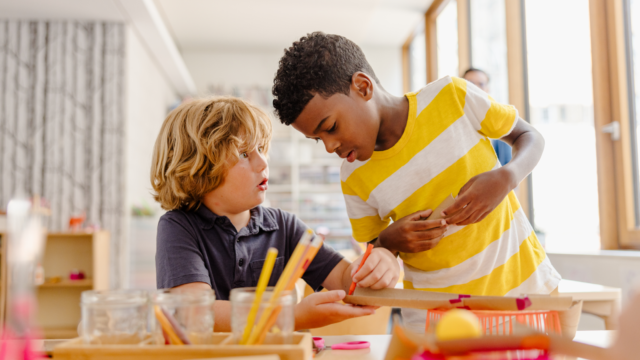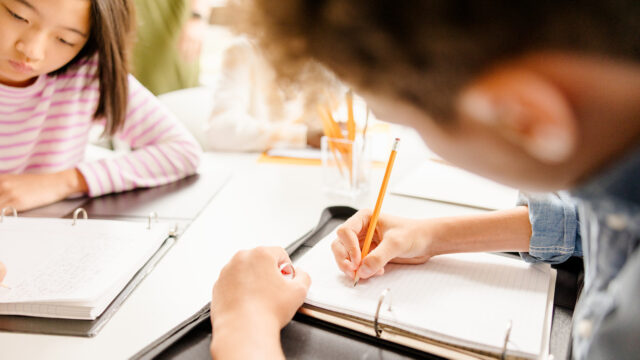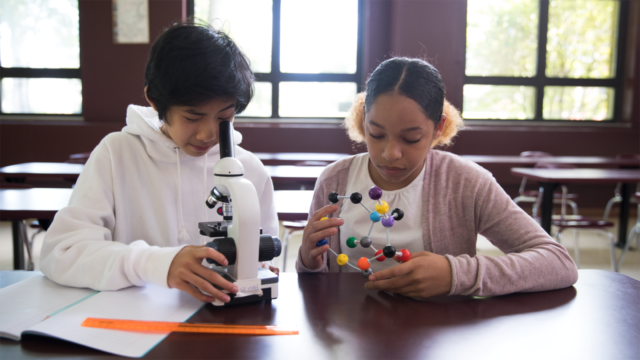
It’s the festive autumn season, and some of your students may be celebrating Diwali, or the festival of lights, which is a major celebration in Hindu culture. It is celebrated by more than one billion people and is also observed by people who belong to several other religious groups, such as Sikhs, Jains, and some Buddhists. In this article, we focus on Hindu traditions and mythology.
The dates for Diwali follows the Hindu lunar calendar, usually falling in late October or early November. In 2025, Diwali begins at sunrise on Monday, October 20. Diwali is celebrated over five days, with each day bringing its own unique traditions and rituals. Different regions of India celebrate Diwali based on various mythological stories, but the festival overall celebrates the victory of light over darkness and good over evil. The festival involves gathering with family, lighting lamps, sharing delicious sweets, and enjoying fireworks.
Diwali lesson plans and activities
Try these 7 Diwali classroom activities to celebrate and learn about the holiday with your students.
1. Clean the classroom
Cleaning is an important practice during Diwali. The first day of Diwali, which is called Dhanteras, is dedicated to cleaning the home along with other rituals. Participants will clean, decorate, and organize their homes to symbolically welcome deities.
Introduce the tradition of Diwali by highlighting the importance of cleaning. You can explain to students that cleaning might represent a fresh start and new beginnings. Invite students to contribute by helping to clean and organize the classroom. You can also explore ideas with students on how to involve their families in cleaning their homes.
2. Make rangoli art
Materials: Colored sand or colored rice, construction paper, glue, pencils
Rangoli is a traditional Indian art style found on a floor or tabletop using different color powders, sand, and other materials. During Diwali, rangoli are traditionally placed at the entrance of homes to welcome guests and deities, especially Lakshmi, the goddess of wealth and prosperity. Traditional rangoli designs often feature geometric shapes such as hexagons and stars.
Students can create a design by sketching geometric shapes onto construction paper. Apply glue to the areas to be colored, then sprinkle colored sand or rice over the glue. Gently shake off the excess to reveal the colored design. For students who need extra help, search online for rangoli templates and video tutorials, which can help them get started with basic shapes and patterns.

Rangoli is a traditional Indian art style where different color powders, sand, and other materials are arranged in geometric patterns on a floor or tabletop.
3. Research diverse Diwali traditions
Diwali is celebrated by various groups, including Sikhs, Jains, and Newar Buddhists. Have students select two of these groups to research how they observe the holiday. Encourage them to use a Venn diagram to compare each group’s traditions. Students can explore topics and questions like:
- What are some important practices for each group during Diwali?
- What foods or symbols are common in their celebrations?
- What does Diwali mean to each group?
- What are the stories each group has about Diwali?
4. Create paper diyas (oil lamps)
Materials: Construction paper, scissors, glue stick, pencil, markers, glitter (optional), sequins (optional)
A diya is an oil lamp that is lit during Diwali in homes or temples and symbolizes goodness and purity. These oil lamps are also placed along roads and businesses to welcome the goddess Lakshmi and to celebrate the triumphant return of Rama and Sita at the end of the Ramayana epic.
Keep the positive energy flowing in your classroom by crafting paper diyas. Search for online videos or instructions to find a construction method that is appropriate for your students. Hang the paper diyas around the classroom and take your students on a gallery walk to admire each other’s designs. It’s a great way to add a touch of brightness to your classroom.
Not only does making diyas showcase student creativity and support students celebrating Diwali, it can also make for a fun history lesson. How did people see in the dark before we had electricity? What different types of oil lamps are there? Ancient oil lamps can be found in museums today, with many different types that vary in shape, materials, and imagery.

Students can craft paper versions of diyas, or oil lamps that are ceremoniously lit during Diwali.
5. Greeting cards
Materials: Cardstock, markers, colored pencils, stickers, glitter
Creating greeting cards can help students learn in many ways. As a Diwali lesson plan, this can be the perfect capstone activity after learning about and discussing the holiday. It can also address a variety of learning goals, such as having students practice their writing skills or express themselves creatively.
Have students decorate and write Diwali greeting cards for teachers, friends, and family members. If students don’t know anyone who celebrates the holiday, one option can be for students to share their cards with the class to discuss what they wrote and why they chose their designs. Encourage students to include elements such as traditional greetings, drawings of diyas, rangoli patterns, or fireworks.
6. Diwali word match
Any topic can be made a little more fun with a matching game! The holiday of Diwali has many vocabulary words associated with it that may be new to students, giving you the perfect opportunity to help students learn new vocabulary, an essential part of reading instruction.
Start by determining what vocabulary words you will incorporate into the matching game. Here is a list of words they might encounter while learning about Diwali:
- Culture: The customs and achievements of a place or group of people
- Decoration: Extra items or images added to something
- Diya: Small oil lamp
- Festival: A celebration of an important event with fun activities
- Fireworks: A display of colorful explosions in the air
- Hinduism: A major religious and cultural tradition that began in South Asia
- Mythology: Stories that belong to a specific religious or cultural tradition
- Prosperity: Wealth and success
- Rangoli: An art form where patterns are created on a floor or tabletop using sand or other materials
- Symbol: An object or idea that represents something else
- Tradition: Customs or beliefs that are passed from one generation to the next
- Victory: The act of winning a competition
Next, prepare cards for each word and its definition. The words and definitions should be on separate cards. One way to do it would be to print out the cards and definitions, then cut them out separately. Distribute these cutouts in small baggies, so students can easily work on matching them.

7. Diwali storytelling
Interactive read-alouds help build relationships and create a sense of community in the classroom. Dive into the rich traditions of Diwali by exploring the stories of Hindu mythology through a read-aloud. A common story of Diwali comes from the Ramayana, an epic revolving around Rama, a major deity in Hinduism.
See if your school library has any books related to the epic’s conclusion, where Rama rescues his wife Sita, returns to the legendary city of Ayodhya, and is crowned king. Diwali celebrates not only Rama being crowned king, but the triumph of good over evil. Storytelling can pair well with practicing writing skills. After reading the story, have students summarize the main events of the text, along with its overall themes and messages.
There are many benefits to independent reading time, too. Depending on the books available to you, students can read not only stories about Rama and Sita, but also fiction texts with characters that celebrate Diwali or nonfiction texts on the traditions of Diwali and how it is celebrated in different regions.
More Diwali classroom activities for students
Do you have any more Diwali activities for students to celebrate Diwali? Share your ideas with us on Facebook, Instagram, or via email at shaped@hmhco.com.
Download our FREE calendar of activities!














